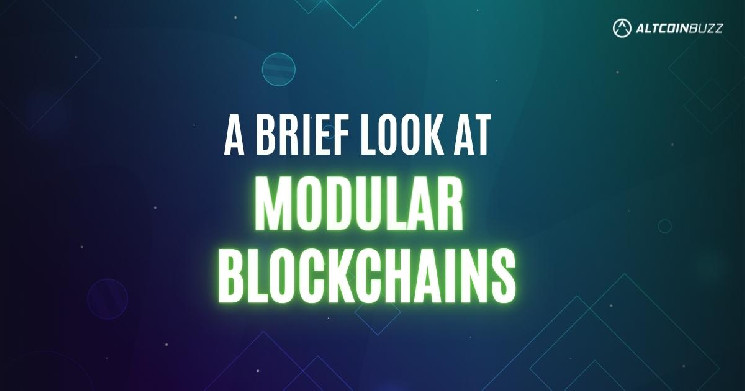A Brief Look at Modular Blockchains

The concept of modular blockchains is becoming the new narrative for network scalability and blockchain infrastructure.
The next evolution of the blockchain allows for designing principle separation of concerns to scale throughput. This can be done while ensuring the network is trustless and decentralized. Modular blockchains can break the connection between computation and verification costs.
Earlier this month, Volt Capital conducted an in-depth analysis of modular blockchains. Their deep dive is beyond the scope of this article so we will cover the basics.
1/ Blockchain modularity: a mental model, in-depth analysis of current architectures, the market landscape, and resources to better understand this nascent but category-defining narrative:https://t.co/8yv1oJgYxa pic.twitter.com/PRJMvtU4sD
— Soona (@soona) July 7, 2022
Evolution of Blockchains
The researchers noted that the core components of a Layer 1 blockchain can be broken up. Furthermore, the result is a vast improvement in individual layers. A more scalable, composable, and decentralized system is the final goal.
Blockchains have the scalability trilemma. This means that a compromise on decentralization, security, or scalability can provide strong properties for the other two. It is very hard to achieve all three without compromising one of them.
Fault proofs can be used to solve decentralized block validation. Splitting blockchain nodes into full nodes and light clients is one option. These light clients can then rely on fault proofs generated by full nodes for transaction validation.
Additionally, the light clients need to assume transactions are valid without having to download the entire block. This is achieved with Optimistic rollups. It can also be achieved through a mathematical primitive called erasure coding.
Erasure coding can perform data availability sampling, allowing light clients to verify the data without downloading the block.
Validity proofs and zero-knowledge rollups can also achieve decentralized block validation. This is carried out by stripping away some of the transaction data for state transitions.
However, there has been some pushback due to security concerns. Additional trust concerns are also raised with a fragmented settlement and data availability layer, the researchers noted.
Application Chains
Blockchains are evolving in a similar way to web infrastructure. Data has moved from centralized server storage to distributed cloud storage. “The decentralized web is evolving from monolithic blockchains and siloed consensus layers to modular, application-specific chains with shared consensus layers,” the researchers stated.
Avalanche and Polygon are two networks already using application-specific chains or app-chains. They are called subnets and supernets and were reviewed by Altcoin Buzz earlier this week.






 Bitcoin
Bitcoin  Ethereum
Ethereum  Tether
Tether  USDC
USDC  TRON
TRON  Dogecoin
Dogecoin  Cardano
Cardano  Bitcoin Cash
Bitcoin Cash  Chainlink
Chainlink  LEO Token
LEO Token  Monero
Monero  Stellar
Stellar  Zcash
Zcash  Litecoin
Litecoin  Hedera
Hedera  Dai
Dai  Cronos
Cronos  OKB
OKB  Tether Gold
Tether Gold  Ethereum Classic
Ethereum Classic  KuCoin
KuCoin  Gate
Gate  Algorand
Algorand  Cosmos Hub
Cosmos Hub  VeChain
VeChain  Dash
Dash  Tezos
Tezos  Stacks
Stacks  TrueUSD
TrueUSD  IOTA
IOTA  Basic Attention
Basic Attention  Decred
Decred  Theta Network
Theta Network  NEO
NEO  Synthetix
Synthetix  Qtum
Qtum  Ravencoin
Ravencoin  0x Protocol
0x Protocol  DigiByte
DigiByte  Zilliqa
Zilliqa  Nano
Nano  Siacoin
Siacoin  Numeraire
Numeraire  Waves
Waves  Ontology
Ontology  Enjin Coin
Enjin Coin  Status
Status  BUSD
BUSD  Pax Dollar
Pax Dollar  Hive
Hive  Lisk
Lisk  Steem
Steem  Huobi
Huobi  NEM
NEM  OMG Network
OMG Network  Augur
Augur  Bitcoin Gold
Bitcoin Gold  Ren
Ren  Bitcoin Diamond
Bitcoin Diamond